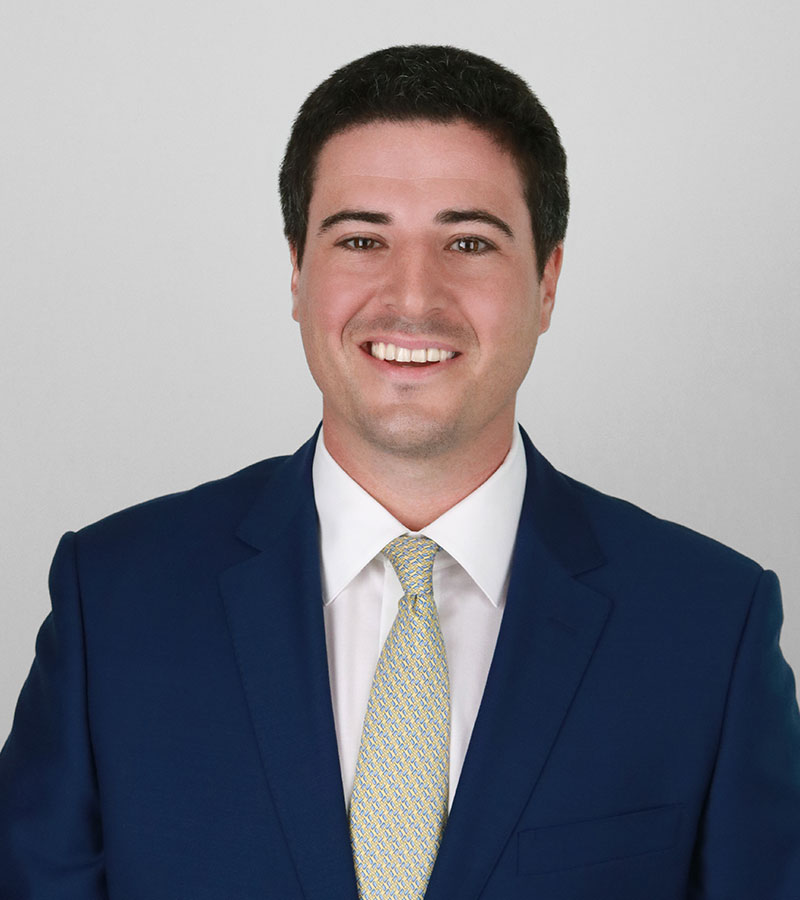What To Do Immediately After A Big Rig Wreck
June 19, 2023

This article is to inform the public on how to best protect your legal rights if you’ve been in a collision with a big rig.
Motor vehicle accidents can be severe, but when big rigs are involved, accidents can be life-altering or even life-ending. The process for filing legal claims after a big rig wreck can differ from a regular car accident. This article gives a step-by-step analysis on what to do immediately after an 18-wheeler accident (referred through this article as a “Big rig wreck”).
A big rig wreck can result in serious and catastrophic injuries or even death. Many times, a person involved in a collision with a big rig is seriously injured, and the only thing they need to worry about is getting the medical help they require as soon as possible.
You might be able to seek compensation for your medical expenses, lost wages, pain and suffering, and other losses according to the American Bar Association (ABA).
But if you’re in a big rig wreck and lucky enough to walk away with minor injuries, some important steps will help you in the aftermath.
If you’re a family member of someone who’s been injured in a big rig wreck, there are things you can do to preserve your loved one’s rights and legal options following a crash.
Immediately After A Big Rig Wreck: 8 Steps
Immediately after a big rig wreck, you should always assess the condition of yourself, your passengers, and those in other vehicles involved in the crash if you’re able to do so safely. While each of the following steps can be an important aspect of the legal case that results from the big rig wreck, you never want to jeopardize your or someone else’s safety. If you need to call an ambulance and do nothing but wait for it to arrive, do it.
1. Call the Police
In most situations, this is 911. If you’re on a highway, the 911 dispatcher will route your call to the local law enforcement agency and/or emergency responders if they are necessary. Make sure to tell the dispatcher approximately how many people are involved in the accident so that it can send as many ambulances and responders as necessary.
Even if the accident seems “minor,” call the police anyway. This way, you are able to get a police report (sometimes referred to as a “Crash Report”) after the big rig wreck detailing the names of everyone involved, describing what happened in the accident, and often-times detailing who caused the wreck (this will be very important if legal action must be taken post-wreck). A police report is the best way to have immediate documentation of the accident, and the police will maintain accurate records of all of the involved vehicles.
2. Document the Evidence at the Scene of the Accident
Again, this is something you should only do if you are able to and if it’s safe to be out of your vehicle and walking around. If you’re on a busy highway and the police aren’t there yet to direct traffic, don’t be wandering around on the road.
Documentation can include photos, contact information for witnesses and everyone involved in the big rig wreck, and other notes about road or weather conditions or other factors that might have affected the accident. Also, getting the insurance information of all drivers involved is very important. It’s near impossible to do so after everyone leaves the scene of the accident.
Photos. Photos. Photos. It’s essential to take as many pictures of everything involved in the big rig wreck, such as all vehicles involved, all damage sustained to any vehicle involved, injuries sustained by the people involved, the road conditions where the accident occurred, the driver’s licenses of all drivers involved, the insurance information for all vehicles involved, as well as the weather conditions at the time of the accident. Weather conditions frequently play a role in accidents and could’ve affected drivers’ visibility or the road may have been slick. Forensic experts can testify about past weather conditions, but a picture can say a thousand words.
Documentation also includes gathering information from other involved parties. Be sure to get as much of the following as possible:
- The other driver’s license number
- The other driver’s name, home address, phone number, and email address
- The other driver’s insurance company and policy number
- The name and contact information for the big rig driver’s employer and trucking company
- The truck license plate number and other identifying information, such as the truck’s DOT number and/or motor carrier number (this information is usually posted on the driver or passenger side of the truck and is incredibly important later on in a lawsuit).
3. Take Down Contact Information for All Witnesses
Anyone who saw or watched the wreck is a “Witness.” It could be someone in one of the involved vehicles, a bystander, a person in a nearby vehicle that wasn’t involved, or even a person walking down the sidewalk next to where the wreck occurred.
You don’t have to take witness statements. Leave that to the police. But if it’s a very active scene with a lot of injuries and damage, there could be a lot of emergency situations that require the police’s attention before they get to interviewing witnesses. Well-meaning bystanders who stopped to help will likely leave once it seems like the emergency response team has things under control. Once they leave the scene, it isn’t easy to track them down again, and they might have valuable information to share.
If you’re able to, approach a witness and ask for their contact information. A name, phone number, or email address is all you need to stay in touch. You can either pass that information to your lawyer when you have one or provide it to the police if they’re performing an accident investigation.
4. Words matter: what not to say after an accident
It’s typically for anyone involved in a big rig wreck to be “rattled” after the dust settles. Try to keep your cool and avoid saying something that might hurt your case down the road.
It’s also human nature to be angry with the big rig driver for causing an accident. But intentionally screaming at the big rig driver won’t score you any points at this stage. On the contrary, most of us tend to say things we don’t mean or regret once we get agitated.
Don’t admit fault or liability. Even if you know you were at fault, keep it to yourself and keep your mouth shut. Don’t lie, but don’t talk about the details. Save that conversation for your lawyer. You might be partially responsible, but other factors could reduce your liability, and it’s your lawyer’s job to find and highlight these factors. Admitting liability for the wreck to the other drivers at the scene never makes your future lawyer’s job any easier.
The police are going to try their best to do a thorough job of reconstructing the big rig accident. They’ll ask you (and every other driver and witness) for a statement. This is normal, but you don’t need to admit fault; lying will only damage your credibility. It’s better not to say anything at all versus making statements now that might later be proven to be false later.
5. Avoid Speaking to Insurance Companies or Adjusters
You are not required to talk to an insurance company, yours or anyone else’s. If you have a lawyer, the better way to handle it is to tell them, “Contact my lawyer for the details.”
Let us not forget that your insurance adjuster is not your friend or confidant. It’s all too common for an insurance adjuster to call someone who was in a wreck to “express concern” or “check in,” but that’s not the whole story. It’s actually a tactic to get you to say that you’re “fine” or “good,” which they can later use against you to offer a smaller settlement. These people are trained to elicit those kinds of responses, so be prepared for that.
Remember, too, that your insurance adjuster isn’t really on your side, either. Their objective is to pay out as little money as possible — that’s how insurance companies make a profit.
Lastly, but most importantly remember that when an insurance adjuster calls you after a wreck the phone call is likely being recorded. Depending on the state you live in, the insurance adjuster may or may not let you in on that little secret (even though they should). Again, these people are not your friend and are only looking out for their own bottom line.
6. See a Doctor
Anyone who has ever been involved in even a minor fender bender knows that immediately after a collision your adrenaline is pumping through you. Likewise, pain doesn’t always immediately present itself immediately after a big rig wreck. Sometimes it takes days. So, even if you think you’re not hurt, get a medical evaluation for yourself because you might have suffered injuries that don’t show immediate symptoms. The longer you wait to seek medical attention post-wreck, the harder it is to demonstrate that it was related to the wreck.
You also might have an injury like internal bleeding, which could be hard for you to know but a doctor will be able to diagnose. Even if you’ve been examined by an emergency medical technician at the scene, request a full medical evaluation at a hospital or your doctor’s office just to be on the safe side.
7. Get your vehicle appraised
Your vehicle might appear to have only minor damage, but like the human body sometimes the damage is internal and not visible to the untrained eye. However, you should NOT go straight to your neighborhood body shop and have your car repaired immediately.
Why? Because the repair estimate needs to be part of your insurance claim. Each insurance company has different requirements for what must be submitted in order to pay for your damages. Some have apps that require you to photograph each external side of the car, and others require you to bring it to a body shop that’s on an approved list.
If roadside assistance is included with your insurance or you belong to a travel association that offers towing, have your vehicle transported to a local body shop, but make sure the shop does not perform any work until you’ve cleared it with the insurance company. Even if you’re sure the car is safe to drive, take it to a mechanic or body shop for an assessment.
8. Avoid Social Media
Do not post anything to your own social media networks that might indicate your physical or emotional condition or how you think the accident happened. You might want to let your family and friends know what happened and how you’re doing, but social media can cause legal issues later.
Even a seemingly innocuous post like, “This big rig wreck happened today — I’m a little banged up, but don’t worry, I’ll be fine!” can hurt your case in court. Instead, only contact your close friends and family directly (offline) if you want to share information or talk about the incident.
Remember that anything you post online can appear in court or in depositions. Even if you delete it, screenshots might exist, or someone might be called to testify about what they saw online. It’s always best to be discreet on social media if you’re involved (or potentially will be involved) in any legal proceeding.
Also remember that after you file a lawsuit against the trucking company, they will likely try to dig up all dirt on you. For this reason and many others, you should change all of your social media profiles from “public” to “private.” This way only your friends can see your profile and no one else.
Contact A Top-Rated Big Rig Wreck Lawyer At Morrow & Sheppard LLP
Whether you were in a big rig wreck or you’re a family member of someone who was, calling Morrow & Sheppard LLP as your big rig accident lawyer as soon as possible dramatically helps your case.
Morrow & Sheppard will help you obtain the maximum amount of compensation possible. They will help you recover monetary things such as your past and future medical expenses, past lost wages and future earning capacity, property damage sustained to your vehicle, and much more. The longer you wait to contact Morrow & Sheppard, LLP, the farther you are away from receiving the maximum financial compensation for your wreck. Don’t hesitate to contact Morrow & Sheppard LLP at (800) 489-2216.
Hogan Leatherwood is an experienced trial and personal injury attorney representing individuals and their families who have suffered catastrophic injuries such as brain injuries, spinal cord injuries, burn injuries and wrongful deaths of loved ones caused by the wrongful business practices of large companies and corporations. Hogan is regarded throughout the legal industry as a zealous and relentless advocate for his clients. Learn more about Hogan.
- Home
- |
- Wrongful Death
- |
- What To Do Immediately After...
















































